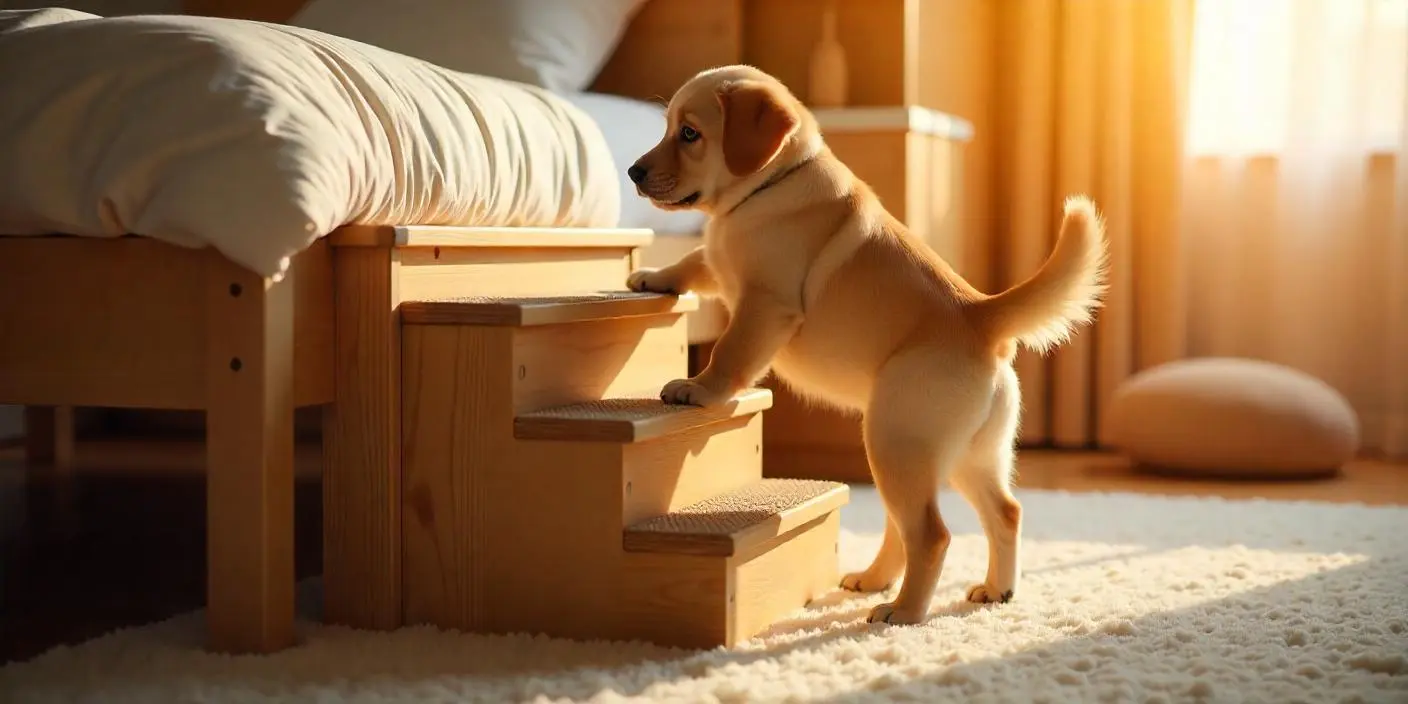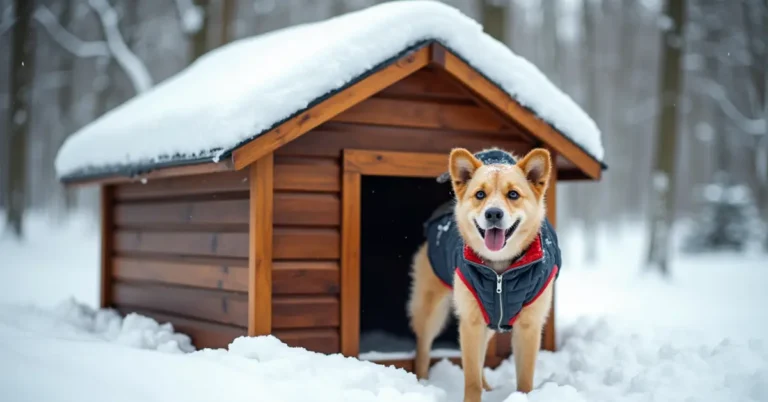Are you tired of seeing your dog struggle to jump onto the bed? Whether you have a small breed or an aging dog, providing them with dog stairs for bed can be a game changer. Not only do these handy little tools help your dog reach higher places safely, but they also protect their joints and overall health. In this article, we’ll explore the many reasons why investing in these stairs is a smart decision for your pet’s well-being. You’ll be amazed at how much easier life can be for both you and your dog with the right set of dog stairs for bed!
Table of Contents

What Are Dog Stairs for Bed and Why Are They Important?
These stairs are small, stair-like structures designed to help your dog access high areas like beds, sofas, and cars without jumping. Unlike ramps, which are inclined surfaces, these stairs allow your dog to climb up step-by-step, reducing the risk of injury. They’re especially useful for small breeds like Chihuahuas and Dachshunds, who may find it challenging to leap onto the bed, as well as for older dogs or those with mobility issues. The need for dog stairs becomes even more evident when you realize how much strain jumping can place on your pet’s joints, potentially leading to long-term health problems.
Protect Your Dog’s Joints with Dog Stairs
One of the biggest benefits of using these stairs is protecting your dog’s joints. Frequent jumping up and down from furniture can cause stress on a dog’s hips, knees, and back. This is especially problematic for breeds prone to joint issues, such as Dachshunds and Basset Hounds, as well as for aging dogs. Over time, the repeated impact can lead to arthritis or worsen existing joint conditions. By giving your dog a safe, gradual way to access the bed, dog stairs help reduce wear and tear on their joints, extending their mobility and comfort for years to come.
How Dog Stairs Benefit Senior Dogs
As dogs get older, their mobility naturally decreases. Conditions like arthritis, hip dysplasia, and muscle weakness make it difficult for them to jump onto high surfaces like beds and couches. This is where stairs come in. They allow senior dogs to maintain their independence by giving them an easy way to access their favorite resting spots. Dog stairs are designed with gentle inclines and non-slip surfaces, making it easier for older dogs to climb up without exerting too much effort. Providing your senior dog with these stairs can improve their quality of life and prevent injuries caused by jumping.
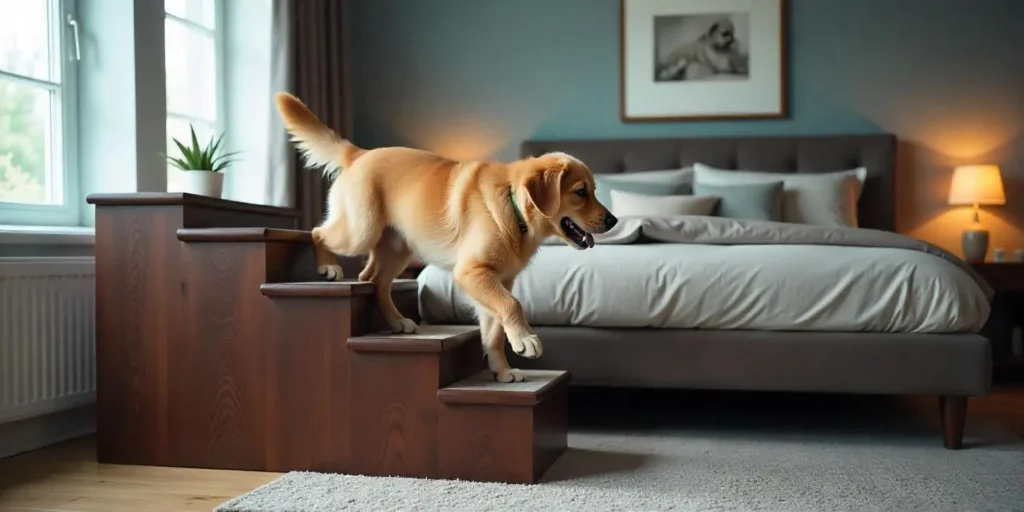
Types of Dog Stairs for Bed
There are several types of stairs available on the market, each catering to different needs and preferences. Choosing the right size of dog stairs is crucial for ensuring safety and comfort. Consider the following when selecting stairs:
- Step Height and Depth: The ideal step height should allow your dog to climb comfortably without straining. Generally, a step height of 4 to 6 inches is suitable for small dogs, while larger dogs may require 6 to 8 inches. The step depth should accommodate your dog’s length, offering enough space to securely place their paws.
- Overall Height: Measure the height of the bed or furniture your dog needs to access and choose stairs that align closely with that height to prevent them from needing to jump.
- Number of Steps: More steps can mean shorter heights, making it gentler for dogs with mobility issues or smaller breeds. Ensure the total number of steps fits your dog’s stride.
Once you’ve determined the dimensions, you can select from several popular types of materials:
- Foam Stairs: Lightweight and soft, these are perfect for dogs with joint problems, providing cushioning for each step.
- Plastic Stairs: Durable and easy to clean, ideal for larger dogs with several options featuring non-slip feet for stability.
- Wooden Stairs: Offer a sturdy and stylish option, often with carpeted steps for extra traction.
Each type of stair has its advantages, so it’s essential to choose the size and material that best suits your dog’s needs and your home’s style.
How to Train Your Dog to Use Dog Stairs
Training your dog to use these stairs can be a fun and rewarding experience. Positive reinforcement is crucial for success. Here’s a detailed guide to ensure your dog feels comfortable and confident using their new stairs:
- Start Slowly: Place the stairs beside your bed and let your dog investigate at their own pace. This initial exploration helps establish familiarity and reduces fear.
- Use Treats and Praise: Encourage your dog to climb the stairs by placing treats on each step. Pair this with verbal praise and gentle petting when they make progress, reinforcing good behavior.
- Consistency is Key: Practice regularly. Make training sessions short but consistent, incorporating them into daily routines. Patience and repetition will help build your dog’s confidence.
- Patience and Progress: Some dogs may be hesitant or take longer to adjust. Stay patient and avoid forcing them. Celebrate small successes to keep the experience positive.
By using these strategies, your dog will likely adapt to using the stairs more quickly and with less stress.
Safety Tips for Using Dog Stairs
While these stairs are generally safe and beneficial, maintaining them ensures they remain a secure option for your pet:
- Secure Placement: Make sure the stairs are positioned firmly against the bed. If they wobble, your dog might be hesitant to use them.
- Regular Cleaning: Keep the stairs clean by wiping plastic or wooden surfaces with a damp cloth and using a vacuum on fabric or foam types. This prevents the accumulation of dirt and hair, maintaining a hygienic environment for your dog.
- Tighten Loose Components: Periodically check screws and other components to ensure they are tight. This prevents the stairs from becoming unstable over time.
- Replace Worn Surfaces: Inspect non-slip surfaces regularly and replace them if they show signs of wear. A secure grip is crucial for your dog’s safety.
- Check for Wear and Tear: Over time, even the best stairs may show signs of wear. Regular inspections help you address any issues early, ensuring safety and durability.
By following these maintenance tips, you can extend the lifespan of your dog stairs and provide a safe climbing option for your pet.
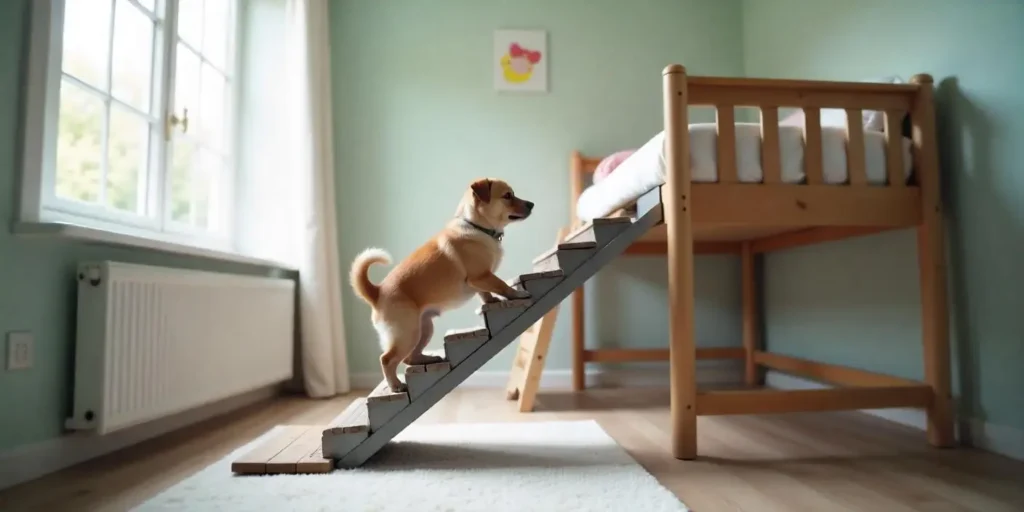
Why Small Dogs Need Dog Stairs
Small breeds like Yorkies, Chihuahuas, and Pomeranians often struggle to reach high surfaces due to their size. Stairs give them an easy way to climb up without needing assistance from you. This not only boosts their confidence but also allows them to be more independent. For small dogs, jumping can also be a safety hazard, as they are more prone to injuries like broken bones and sprains from falls. Dog stairs provide a safer alternative, allowing your small dog to get onto the bed without putting themselves at risk.
Best Materials for Dog Stairs
When it comes to selecting the right stairs, material matters. Different materials offer various benefits depending on your dog’s needs:
- Foam: Foam stairs are ideal for dogs with joint problems or arthritis. The soft material cushions each step, reducing the impact on your dog’s joints.
- Plastic: Sturdy and long-lasting, plastic stairs are easy to clean and maintain. They’re perfect for dogs that are a little rougher on their things.
- Wood: For a more aesthetic option, wooden stairs blend seamlessly with most home décor and offer solid, durable steps for larger dogs.
- Non-Slip Surfaces: Beyond the base material, incorporating nonslip surfaces is crucial for your pet’s safety. Rubber treads provide excellent grip and can be easily added to existing steps. Textured carpeting not only enhances grip but also adds a soft touch that may comfort your dog. Consider stairs that feature these materials to provide stability and prevent your pet from slipping, particularly on slick hardwood or tile floors.
No matter what material you choose, make sure it provides enough traction for your dog’s paws to prevent slipping and enhance safety.
How Dog Stairs Help with Post-Surgery Recovery
If your dog has recently undergone surgery, especially for issues like torn ligaments or joint replacements, jumping onto the bed could hinder their recovery. In such cases, these stairs offer a much safer and gentler alternative. By using stairs, your dog can avoid the sudden movements and impacts that could cause further injury. Many veterinarians recommend using them during the recovery period to reduce the strain on your dog’s healing body.
Expert Insights: Why Vets Recommend Dog Stairs for Post-Surgery Recovery
Veterinarians advocate for the use of dog stairs during recovery to minimize stress on healing joints and tissues. After procedures such as ligament repairs or hip surgeries, dogs require a period of rest to allow incisions and internal structures to heal properly. Jumping puts excessive pressure on these sensitive areas, risking complications or delays in recovery. Therefore, stairs offer a gradual pathway that helps distribute your dog’s weight safely while climbing or descending.
According to veterinary professionals, maintaining a low-impact environment is crucial during recuperation. Dog stairs facilitate mobility by preventing sudden jerks and impacts that could aggravate healing tissues or stitches. This not only aids in faster recovery but also reduces the likelihood of post-surgery injuries. In addition, using stairs can help ease your pet’s transition back to daily activities without the physical strain that jumping entails.
Incorporating dog stairs into your pet’s routine as advised by vets ensures a smoother and more comfortable recovery process, ultimately enhancing your dog’s quality of life as they regain their mobility.
DIY Dog Stairs: Is It Possible?
If you’re feeling creative, building your own stairs can be a fun DIY project. All you need are some basic materials like plywood, carpet, and screws to create a set tailored to your dog’s needs. By making your own stairs, you can customize the size and height to fit your dog and your furniture perfectly. Plus, DIY stairs can often be more affordable than store-bought versions while still providing the same safety benefits.
Are Dog Stairs for Bed Worth the Investment?
You might be wondering if these stairs are worth the cost. The answer depends on your dog’s specific needs. If you have an aging dog, a small breed, or a pup with joint issues, then investing in dog stairs can be valuable for their long-term health. Not only do they help prevent injuries, but they also improve your dog’s overall quality of life by giving them the freedom to reach their favorite resting spots without your help.
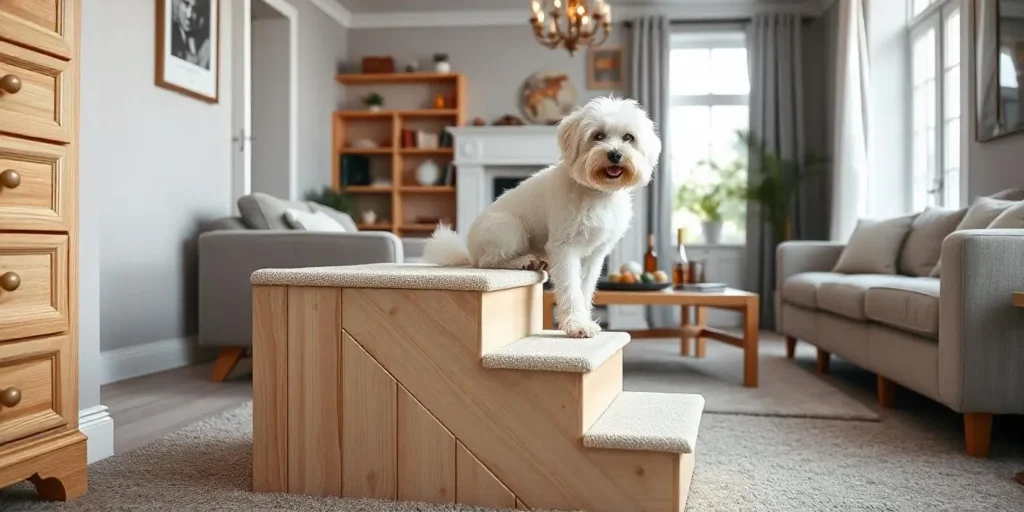
Dog Stairs: A Lifesaver for Dogs with Mobility Issues
For dogs with mobility issues caused by age, arthritis, or injuries, dog stairs are more than just a convenience—they’re a lifesaver. These stairs give your dog the independence to continue enjoying their favorite places, like your bed or the couch, without the pain and strain of jumping. Whether your dog is recovering from surgery or simply slowing down with age, these stairs offer a safe, comfortable solution for everyday mobility challenges.
Conclusion:
In conclusion, dog stairs for bed are an excellent investment for any dog owner looking to improve their pet’s safety, comfort, and overall well-being. Whether you have a small breed, an aging dog, or a pup with joint problems, these stairs provide a safe and easy way for them to reach higher surfaces without risking injury. By reducing the strain on your dog’s joints and giving them the independence to move freely, these stairs can make a world of difference in their daily life.
For more tips on making your dog’s life comfortable, check out our articles on Choosing the Best Dog Crate and 15 Must-Know Tips to Choose the Best Dog Beds.
So why wait? Consider investing in a set of dog stairs for bed today and give your furry friend the gift of comfort and safety.
FAQs
1. What size dog stairs for bed should I buy?
The size depends on the height of your bed and the size of your dog. Make sure the stairs are tall enough to allow your dog to reach the bed comfortably.
2. Are dog stairs for bed safe for puppies?
Yes, they are safe, especially for puppies who may have trouble jumping onto high surfaces.
3. How do I clean foam dog stairs for bed?
Foam stairs usually come with removable, machine-washable covers. Simply remove the cover and wash it as needed.
4. Can large dogs use dog stairs for bed?
Yes, large dogs can use these stairs as long as they are sturdy and designed to support their weight.
5. How long do dog stairs for bed typically last?
The lifespan depends on the material and usage. High-quality stairs can last for several years with proper care.

